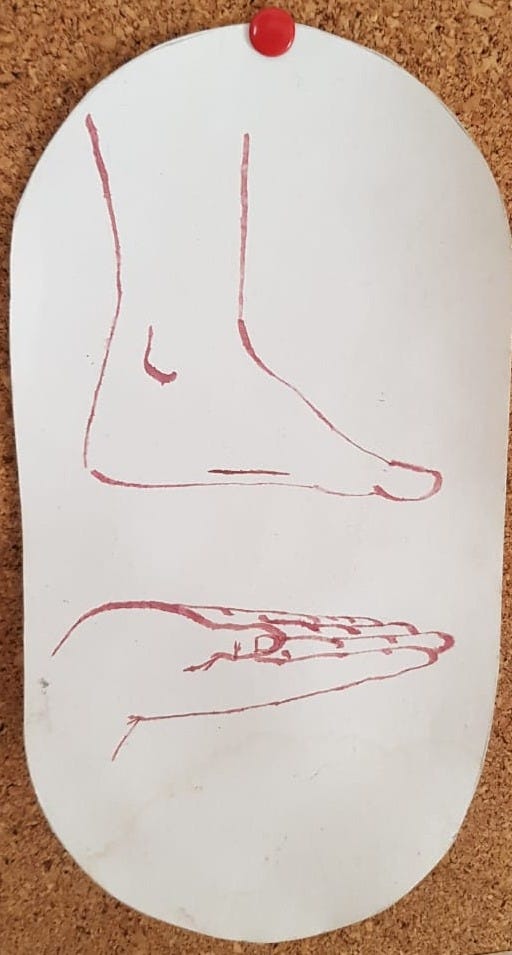To dwell in complexity is not to master an elaborate schema of interconnections, nor is it to dissect the world into networks of causality. It is, rather, to inhabit a world in movement—a world that is always already happening, spilling over the edges of what we can think or say about it. It is to live in a world where every step we take sends ripples through the whole, where each moment emerges from a tangle of forces beyond our grasp, and yet is intimately shaped by our presence.
And yet, despite the growing fascination with complexity, there remains a stubborn tendency to treat it as a thing—something to be analyzed, charted, made sense of. Complexity, we are told, is a problem to be managed, a challenge to be navigated, a puzzle to be solved. It becomes an external object, a condition that we face, rather than a mode of being in the world. But if complexity is anything living, it is not something we stand outside of. It is not a map to be deciphered but the very terrain upon which we walk.
To make this shift—from complexity as something we observe to complexity as something we are—we must loosen the grip of inherited habits of thought, those habits that teach us to slice reality into fragments, to separate self from world, knowledge from experience, perception from action. Instead, we might begin with three invitations:
To inhabit the present as generative rather than neurotic
To recognize relationality not as a feature of life, but as its very substance
To approach simplicity not as a reduction of complexity, but as its contemplation
Each of these, as we shall see, is less a theoretical principle than a gesture—a way of stepping differently into the currents of life.
1. The Generative Present
The wind shifts. A flock of birds startles from the field. A dog pricks up its ears. A storm, perhaps? We do not know. The dog does not know. But in the very way it holds itself, in the fine-tuned precision of its stance, there is an intelligence at work—an intelligence that does not predict but perceives, that does not project but attends.
This is the intelligence of the generative present.
Compare this with how we, as modern humans, have been taught to think about time. The future, we are told, is something to be controlled, planned, secured. We are fed a diet of projections, strategies, risk assessments—attempts to pin the future down before it happens, to keep it from slipping through our fingers. But what is this fixation on the future if not a refusal of the present? What is a five-year plan if not an attempt to escape the only place where action is actually possible? I do not mean to say that all planning is useless, or gazing into the horizon of time is senseless. But that the fixation of linearity in an ever changing world becomes an anxiogenic activity, and that compressing tasks in a goal oriented life has reached a point of near madness.
To live in a neurotic future is to be constantly at war with time, forever striving toward a horizon that remains in idealizations. To live in a generative present is to turn towards the conditions already forming, to feel their tensions and textures, to move with them rather than against them. It means to bring forth an integrated intelligence of mind-body and invite more sensitivities to sense and meaning making than data analysis and a confusion between authentic desires mixed with fears of lacking and insecurity.
This is not passivity. It is not the resignation of the dreamer who drifts without direction. It is the poise of the artist, the improvisation of the musician, the step of the dancer attuned to the rhythm of the floor. It is the way a potter shapes clay—not imposing a form upon it, but listening with their hands, letting the curve of the vessel emerge from the pull of the material.
We do not predict the world into being. We join it mid-gesture.
Time is not an arrow, nor is it a road that stretches neatly from past to present to future. Time is movement, yes, but not a movement toward—rather, a movement within reality. It does not proceed in a straight line, forever marching forward, but cycles between potentiality and actuality, between what is forming and what has formed. The future, in this sense, is not something distant, not an endpoint waiting on the horizon—it is already here, folded within the present, thick with possibility.
Think of a cloud, heavy with moisture. It is not yet rain, but rain is already there, held in tension, waiting for the conditions to tip. Or consider a magnetic field, unseen yet charged with the latent force of an electric current. These are not separate from what is—they are its unrealized aspects, its unfinished gestures.
To attune to time in this way is to move differently through the world. It is to develop a sensitivity to what has not yet happened but is already in the making. The future is not a blank space, nor a destination—it is a field of possibility charged with qualitative tensions, and these tensions can be felt, traced, even followed.
But this way of perceiving time collides with the familiar scripts we have inherited—the ones that tell us the future is a projection of our desires, a void to be filled with plans, goals, fears, and fantasies. A mind cut off from the body, floating untethered in abstractions, loses its ability to sense these tensions directly. It drifts toward wishful thinking or sinks into catastrophe, oscillating between utopia and apocalypse, never finding a way to act.
The future is not a fantasy. Nor is it a statistical probability. It is an embodied awareness of potentiality—at once more tangible than dream and more subtle than calculation. To perceive it is not to speculate, but to listen—to feel the charge in the air before the storm, the shift in the wind before it turns, the almost-imperceptible tremor in a situation just before it unfolds. It is, in short, to be alive to the becoming of things.
2. Relationality: the stuff of life
Imagine a spider spinning its web. Its silk does not emerge from a preformed blueprint; rather, it unfurls in response to the conditions it encounters—here an open space, there a supporting branch. The web is not constructed from the spider’s mind, but with its surroundings, drawn out through a dance of tension and release.
And yet, we modern humans persist in believing that we are self-contained beings, that we enter into relationships as autonomous units, that we first exist and only then connect. But life, if it teaches us anything, shows us the opposite: we do not relate because we are, we are because we relate.
We are not selves who have relationships. We are relationships, through and through.
Consider the body. Even in the most silent moment of solitude, the body is engaged in ceaseless dialogue—with the air it inhales, the microbes that populate its gut, the warmth of the chair against the skin, the unseen forces of gravity holding it in place. We are never not in relation. The very boundary of the skin, that supposed marker of individuality, is porous, a membrane not of separation but of exchange. We are actually “made of” more organism that have a different DNA than ours than our “actual” cells. Take a moment to feel this through - what we regard as Self is more a “we” than an “I” at a cellular level. This self is a relational emergent, from physical to social and psychological realities.
Now consider the workplace, the organization, the so-called system. Here, too, we find the same stubborn illusion: the belief that intelligence is housed in individual minds, that decision-making happens inside boardrooms, that change is a matter of shifting structures. But if we look closely, we see something else: that an organization is not its frameworks, its policies, its vision statements—it is the living web of encounters and exchanges that sustains it.
To think relationally, then, is not to think about relationships as things that happen between individuals. The between is less what fills a space of boundaries and more the creative tissue that gives them reality. It is to recognize that there are no individuals to begin with—only shifting constellations of becoming, each node defined not by what it is but by what it participates in.
3. Simplicity as the Contemplation of Complexity
Stand by the sea. Watch the waves roll in. The surface is a chaos of movement—eddies, foam, shifting light. And yet, does this feel complicated? No. It feels vast, whole, elemental. The complexity of the sea is not an entanglement to be unraveled, but a presence to be met. It is the same with forest, human emotion, cooking, music,
Simplicity is what happens when we stop trying to grasp complexity and allow ourselves to dwell within it, accepting it, observing it, integrating it.
It is common to think that the opposite of complexity is order, or worse, that it is reduction. That in order to make sense of something, we must simplify it, strip it down, make it manageable. But this is a confusion. Simplicity is not the absence of complexity, but the capacity to perceive it in intimacy. Simplicity is not reduction, it is connection.
Think of a dancer in motion. To break down each micro-adjustment of their muscles, each shift of balance, would be an exercise in analytical futility. But to watch the dance as a whole, to witness the way it breathes and unfolds, is to encounter something effortlessly simple. The complexity is still there—it has not been erased—but it is felt, rather than dissected.
In this way, simplicity is not the opposite of complexity. It is its mode of essence. Like the center to the circle, the axis to a spinning motion. It is what complexity looks like when it is not resisted.
Living Complexity
To live complexity is not to master a body of knowledge. It is not to construct ever more sophisticated theories or to devise better models. It is to step differently into the world—to abandon the neurotic chase of the future, to dissolve the illusion of individual selfhood, to behold complexity without the need to tame it.
It is to recognize that we are not facing complexity, but moving with it.
Like the weaver whose hands follow the pull of the thread, like the musician who listens before striking a note, like the bird that senses the shift in the wind—to be complex is to be alive to the currents that shape us, to move not from control but from attunement, not from prediction but from participation.




